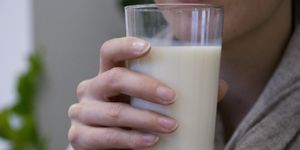New Technology Discovered to Fight Citrus Greening
Citrus greening is a real threat to orange farmers in many parts of the US, Brazil, and China. Florida was first hit by the disease in 2005 and currently affects 80%-90% of the state's citrus groves. Transmitted through the tiny Asian citrus psyllid, Diaphorina citri, this 2 mm long pathogen can wreak havoc on a citrus grower’s crop and lead to financial ruin. According to Labroots, “The disease takes over the leaves of a tree, essentially hardening the arteries of the plant, and making it impossible for the tree to pass water and nutrients through its xylem and phloem. That means that the tree doesn’t have enough energy to properly produce fruits, and oranges will fall off of the tree before they’re even ripe.”
So not exactly a farmer’s piece of cake. And the technology used to fight the pathogen is not exactly advanced or effective – basically, it just includes monitoring pest populations and spraying them with pesticides. Farmers also have to eradicate all of the individual infected trees to stop spreading of the disease.
But researchers from the National Institute of Science & Technology for Semiochemicals in Agriculture may have found an answer to farmers’ prayers. Their findings, published in Scientific Reports, explain how the researchers synthesized D. citri's sex pheromone to use as bait in traps to lure the insects, kill them, and prevent mating, according to Science Daily.
"The discovery and synthesis of this sex pheromone should make monitoring and controlling the insect more efficient so that the incidence of HLB can be reduced," said José Roberto Postali Parra, one of the researchers. HLB refers to the vector’s Chinese name Huanglongbing, which means yellow dragon.
After years of investigation trying to identify HLB’s sex pheromone, researchers from many institutions collaborated in a united effort to isolate the correct semiochemicals. They used a technique called electroantennography (EAG), which measures the output of insect antennae to the brain for a given odor, in order to determine which substances most attracted males during peak mating time. The EAG measurements combined with analysis by olfactometry showed that the semiochemical that males were most attracted by was acetic acid. In addition to laboratory analysis, the researchers also used field tests to establish this finding; they baited traps with acetic acid and saw that those traps with acetic acid captured more male and female insects than control traps without acetic acid.
If researchers can encourage farmers to install these baited traps in their fields, the hope is that growers can collect samples of the pests in order to determine its the presence in a particular area. "Our aim is to enable citrus growers to use this pheromone to control the disease at the lowest possible cost," said José Maurício Simões Bento, another researcher on the study.
Sources: Scientific Reports, Science Daily
-
APR 30, 2024Immuno-Oncology Virtual Event Series 2024
-
MAY 07, 20243rd International Biosecurity Virtual Symposium
-
JUN 06, 2024The Future of Scientific Conferencing
- See More


















































